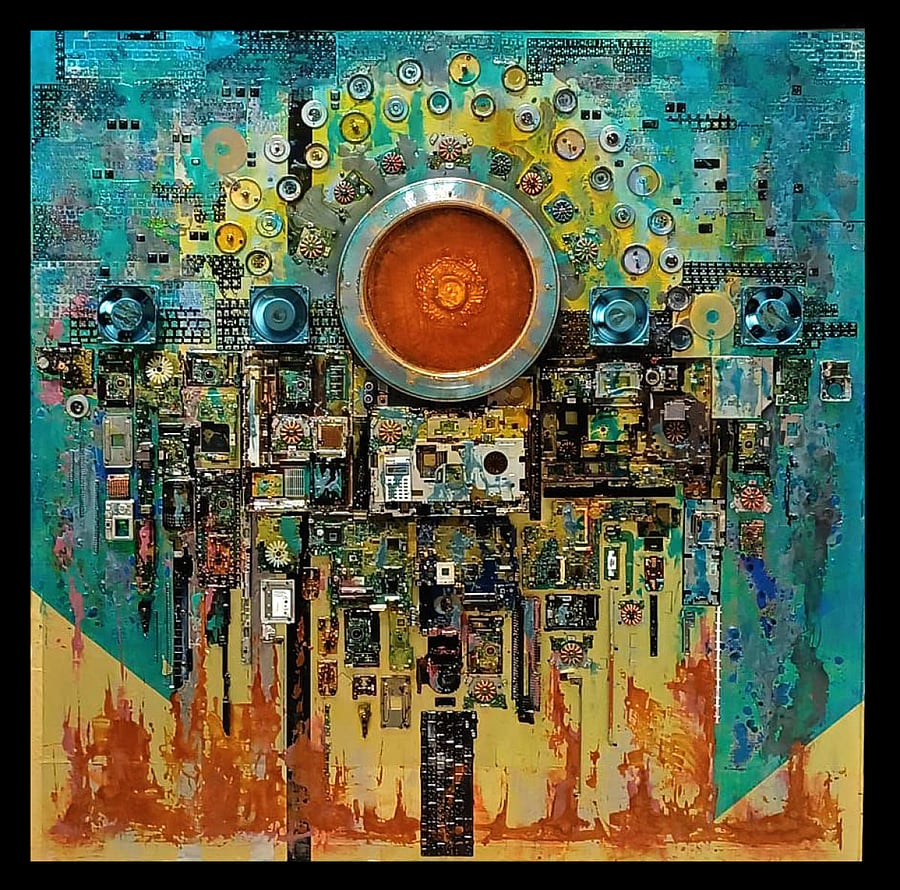
As the world is moving towards digitisation, evidently more and more electronic products are getting manufactured. Needless to add, most of them have a short lifespan and a huge amount of e-waste ends up in landfills. According to WEEE (Waste Electrical and Electronic Equipment) Forum, an international organisation formed in 2002 with a membership of 44 WEEE producer responsibility organisations, in 2021 alone, global e-waste was nearly around 57.4 million tonnes and by 2030 this is expected to cross 70 million tonnes. India alone produced more than one million tonne of this waste in 2019. And at present, only 17.4 per cent of it is getting recycled for its gold, silver and copper content. The rest is creating toxicity and along with other pollutants is burdening our environment.
Manufacturers are racking their brains to find methods to recycle this e-waste. But they say when every logic fails, creativity steps in and this seems to be the case with e-waste as well. All over the world, designers and artists are challenging their creativity to artistically use this humungous amount of raw material available in the dumping grounds of the world. Looking at their creations, it is impossible to say the raw material used could ever have been termed as ‘waste’ or ‘junk’. In fact, The Design Museum of London recently held an international exhibition titled ‘Waste Age: What Can Design Do?’ by designers and artists showcasing creative usage of waste including e-waste. At this show using industrial waste, Indian artist Shubhi Sachan too exhibited her works.
Back home, in many places like airports, renowned real estate offices and public places, you will see beautiful sculptures, murals or wall hangings created using e-waste. In fact, Prince Charles of Wales was fascinated when he saw Mumbai-based artist Haribaabu Nateshaan’s work exhibited in 2019 at a meeting of top business leaders of the Indian Sustainable Council. “He spent nearly 40 minutes asking me in detail about e-waste art and how I create it. I told him that my home and studio have become a dumping ground of e-waste by residents of my housing society, my friends and their friends,’’ Nateshaan reminisced about the incident.
Nateshaan, a professional artist whose e-waste art and sculptures are priced anywhere between Rs 50,000 and Rs 20 lakh, explained that even as a child he always thought of creating things with whatever trash his mother threw away. He continued making art from throwaways, discards and trash even in his art college in Chennai, NID (National Institute of Designs) Ahmedabad and Mumbai. He says, “I see life in stillness and a beginning in every end. Whenever I see a scrap material, I see a soul waiting to come to life. And my art has to be green and sustainable.”
Sustainability is a common motto among all artists using waste material. ‘We can’t pollute planet earth more and the ‘use and throw’ culture has to be junked’ is the message that these artists want to give out.
Junk out, art in
“There’s a lot of carbon footprint we are creating. At my culture park in Karjat, around 63 km away from Mumbai, I am making an educational hub and an environment-conscious open art museum. I want people to come and see what can be done with scrap, which need not always go to dump yards,” says Sukant Panigrahy, a Mumbai-based art director.
Panigrahy, who has been a director of set design for films such as Dev D, Chak de India, Tashan etc., has seen the mammoth amount of junk created on film sets. For the last decade, he is on a mission to make art from junk, exhibit it at art festivals all over the country and create awareness.
“We have to adopt sustainability. We can’t leave a destroyed planet to our next generation and we have to teach them to take care of their surroundings,’’ the art director urges.
Bengaluru-based mural artist Jyotika Kapoor too has been doing something similar.
“Creating art from waste is an easy way to beautify spaces and it also gives out a strong message on sustainability,” says Kapoor, former chairwoman of Flo, the women’s wing of the Bengaluru chapter of FICCI (Federation of Indian Chambers of Commerce and Industry).
The pandemic and the resultant intermittent lockdowns helped her to spread this awareness among some 60 women members of Flo of Bengaluru, to join hands to create art from e-waste. The result was the beautiful 9’x 9’ mural of a butterfly put up on the walls at the arrival area of the Kempegowda International airport in Bengaluru.